Rank Species | Genus Lactuca Higher classification Lactuca | |
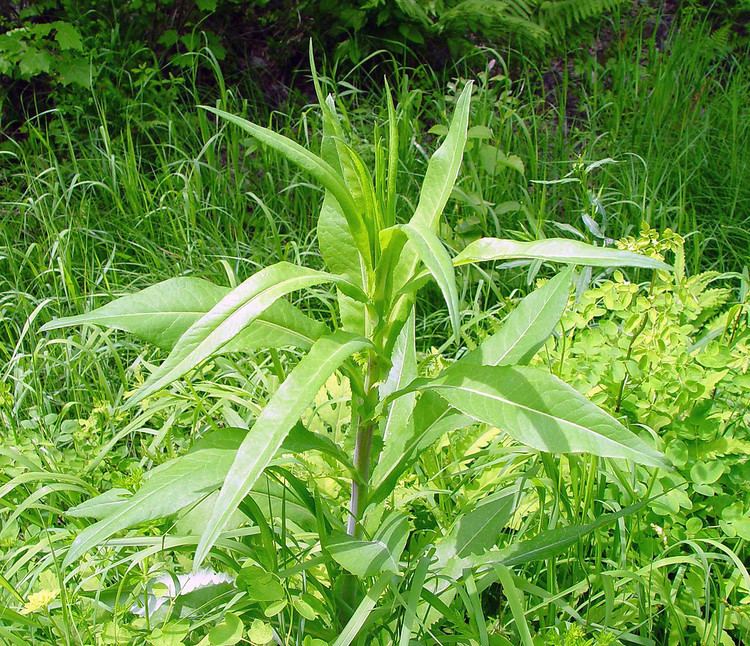 | ||
Similar Lactuca, Daisy family, Lactuca biennis, Lactuca floridana, Lactuca saligna | ||
Lactuca canadensis is a species of wild lettuce known by the common names Canada lettuce, Canada wild lettuce, tall lettuce, and Florida blue lettuce. Its true native range is not clear, but it is considered to be a native of the eastern and central parts of North America. It naturalized in the western part of the continent as well as in Eurasia.
Contents
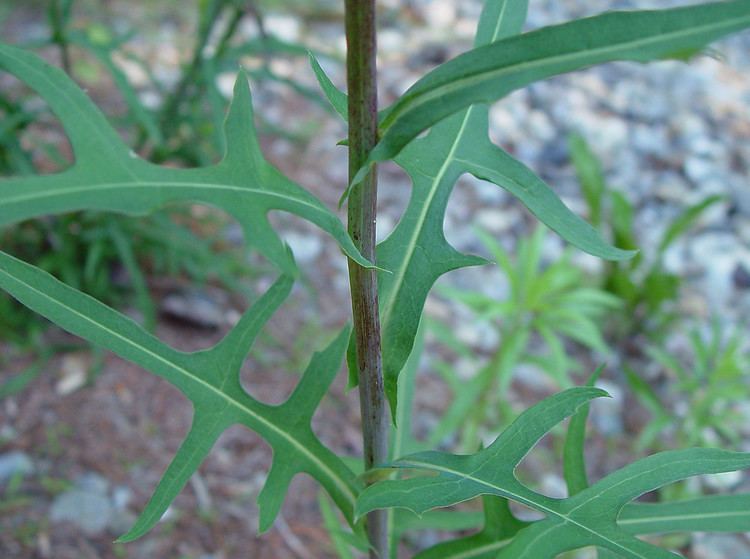
Lactuca canadensis is a generally biennial herb in the daisy family growing from a taproot to maximum heights of 50–200 cm (19.5–78.5 in) or more. The leaves are deeply lobed and occasionally toothed. The top of the stem bears an inflorescence with many flower heads, each up to 1 cm (0.5 in) wide when open. The heads have many pale yellow ray florets but no disc florets. The fruit is a dark-colored achene about half a centimeter (0.2 inches) long with a white pappus.
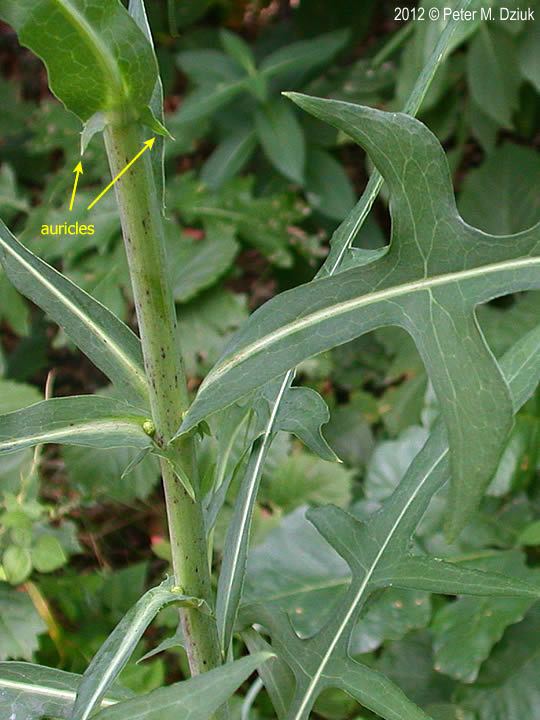
Description
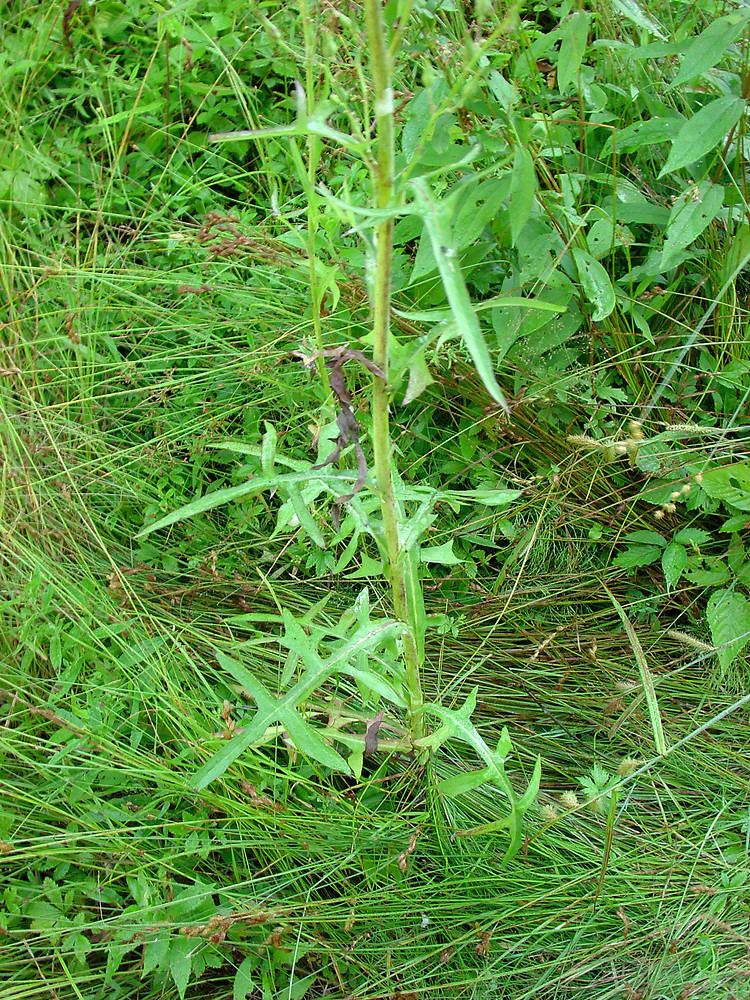
Annual biennial dicot that looks like a weedy plant but is variable in appearance. Typically 7.6 cm-20.3 cm tall but can be found up to 25.4 cm and 7.6 cm across with an oblong shape, wider at bases and come to point at tip. Stem is glabrous and often glaucous, with light or reddish green color. Leaves are alternate mostly with deep pinnate lobes, however small leaves have shallow lobes or none at all. Leaf surface color ranges from shiny to dull in light to dark green pigments that can sometimes appear in purple or yellow shear cast. Leaves are slightly toothed along margins with small hairs along underside of leaf vein.

Flower heads appear dandelion-like and attach at the apex of the stem and are 8mm across. The florets are yellowish or slightly red to orange in color, consisting of 12-25 per plant. The base of the flower head has several floral bracts that appear light green and glabrous. Flowers bloom in late summer or early fall for approximately 3–4 weeks. Flower does not seem to emit noticeable scent. After the blooming period, flowers are replaced by dark achenes with tufts of white hair. Achene has longitudinal ridge and can have black spots on either side and are distributed by the wind. They are ovoid; slightly flattened but curved in shape. A plant can have buds, flowers, and achenes simultaneously. Roots are a thick deep taproots that contain a white latex apparent when cut.
Taxonomy
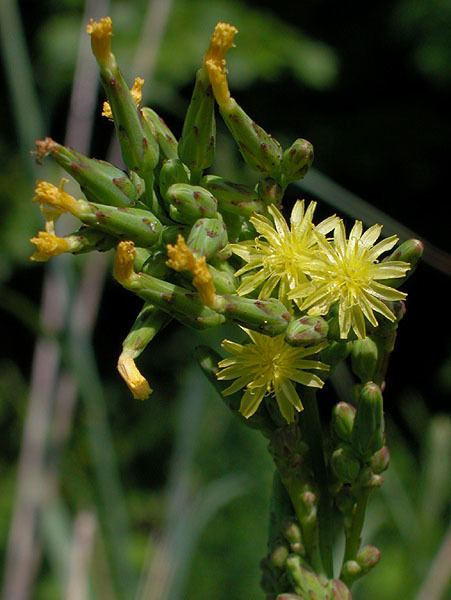
Asteraceae, also referred to as Compositae, has more than 1,620 genera and 23,600 species. Contains herbs, shrubs, and trees that make up one of the largest plant families. Some species are valuable food crops or produce cooking oils. Asteraceae family members have florets, small flower heads with many small flowers. One seeded fruit is present with a hard outer covering. Leaves are compound with mostly alternate arrangement along stem. Most descriptive facet of this species is its flowers, which have inflorescence that resemble individual flowers. Most of family have flowers in outermost row that are flat and have an elongated corolla that is like an individual petal of similar flowers. The pistil of females contain two carpels, which are fused to form ovary with terminal style. The ovary has a single ovule which arises from the base.
Lactuca is a genus of flowering plants in the Asteraceae family that is commonly referred to as "lettuce". The genus contains at least 50 species worldwide.
Range and habitat
Found commonly in all counties in Illinois, USA. Can be found in Fred E. Stanback Ecological Preserve on the campus of Catawba College in Salisbury, NC. Ranges across all states in the United States, except for Nevada and Arizona, and across most providences in Canada. Native status occurs in Canada and the Lower 48 states.
Habitat are moist to slightly dry with Lactuca canadensis found in black soil, clay, and gravel prairies, as well as woodlands, thickets, savannas, boarders of lakes and rivers, limestone glades, fence rows, pastures, abandoned fields, powerline clearances, road and railroad sides, vacant lots, and waste areas. Most common in degraded and disturbed habitats, like prairies, but can also be found in rich and diverse, high-quality habitats.
Uses
Lactuca canadensis contains lactucarium, which is the milky sap (white latex) that flows through stem, leaves, and roots of plant. It is used as a medicinal herb when dries after contact with air. Used as medicinal treatments for its anodyne, antispasmodic, digestive, diuretic, hypnotic, narcotic and sedative properties. Concentrations of lactucarium are low in young plants but increase in older plants, occurring highest when in blooming period. Sap can be applied to skin in use for treatment of external warts. Has been seen as valuable in treatment as a remedy for insomnia and muscular arthritis. It is a relaxing and sedative herb that is used to induce sleepiness, and calm restlessness and anxiety.
Plant has not been seen to be toxic, however some plants in the genus contain a narcotic principle that has its highest concentration when in blooming period. Young leaves and stems can be edible and cooked and eaten as greens.
Pests
Grazing by deer in the Cedar Creek Natural History Area in Minnesota has affected the height and vertical growth of Lactuca Canadensis, which is not able to compensate and replenish itself from the damage resulting from the deer grazing. Eastern Goldfinch occasionally eat seeds, limiting dispersal. Mammalian herbivores browse on foliage despite bitter latex. Cottontail Rabbit eats leaves of young plants. Horses, cattle, and sheep have also been seen to graze on the plant.
Cultivation
Preferably in moist to slightly dry conditions and in full to partial sun. Loamy soil is best for fertility, however, a clay-loam and gravely soil are tolerated. Size varies depending on growing conditions, can appear to look like a weed.
Has been seen to hybridize wildly with Lactuca ludoviciana and is hard to separate the two species.
